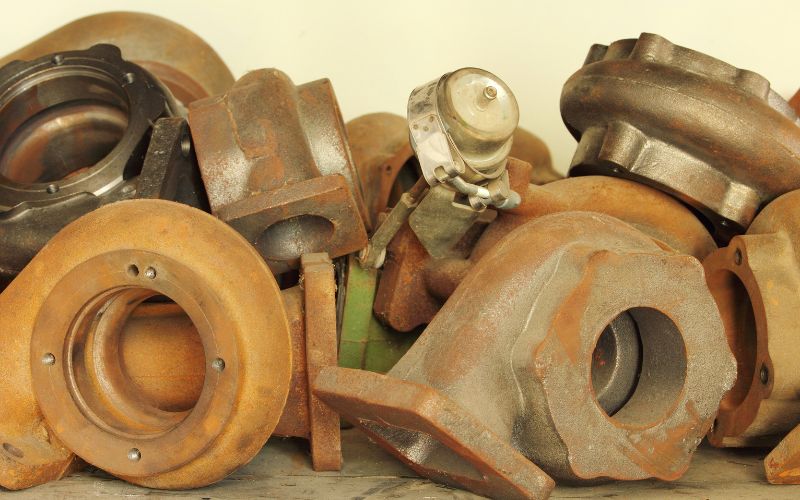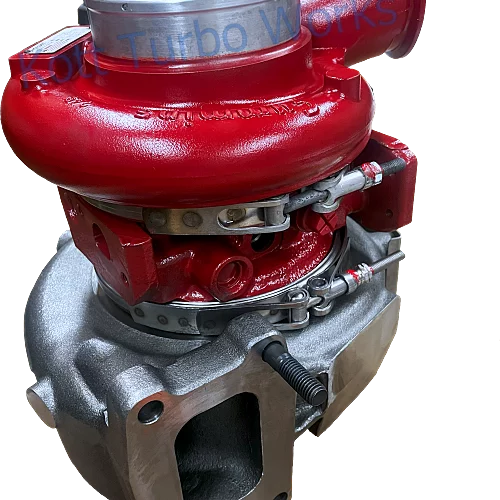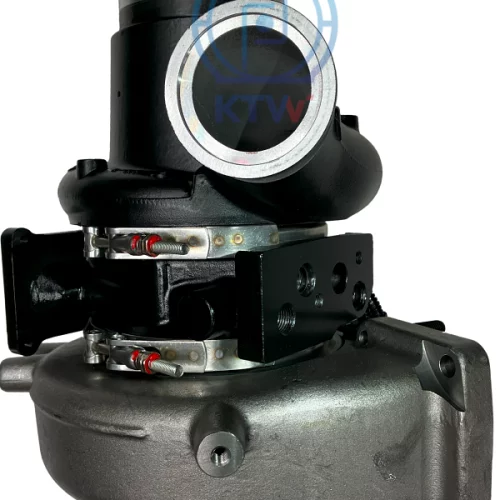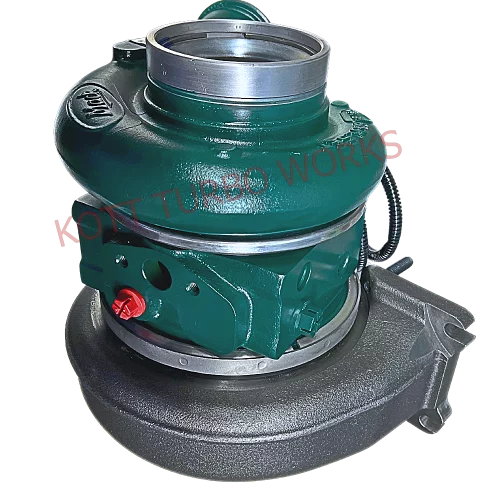$0.00
Top 10 Signs Your Turbocharger Needs Replacement
Turbochargers have become a vital component in modern automotive engineering, enhancing engine performance and efficiency by forcing more air into the combustion chamber. This process allows for a more powerful and efficient engine without significantly increasing its size. However, like any mechanical component, turbochargers can wear out over time or fail due to various reasons. Recognizing the signs of a failing turbocharger is crucial for maintaining your vehicle’s performance and preventing extensive engine damage. In this article, we’ll explore the top 10 signs that indicate your turbocharger may need replacement.
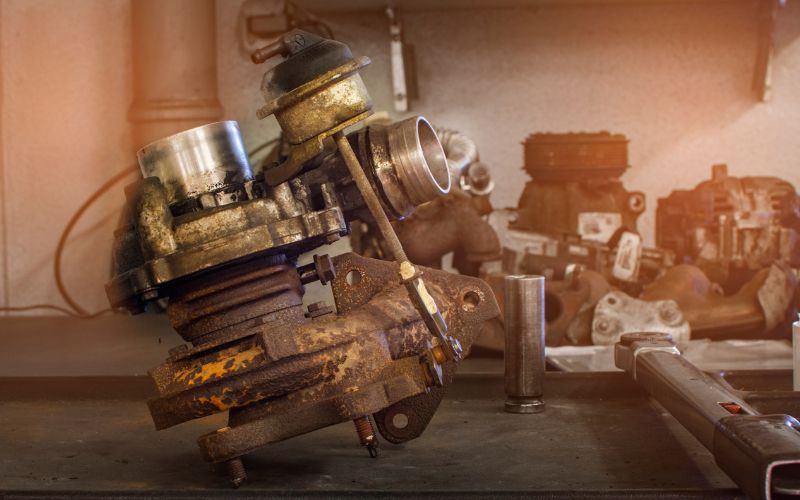
1. Excessive Exhaust Smoke
One of the most noticeable signs of a failing turbocharger is excessive exhaust smoke. If you observe blue or black smoke emanating from your vehicle’s exhaust, it’s time to investigate further.
- Blue Smoke: This typically indicates that oil is leaking into the combustion chamber, often due to worn seals within the turbocharger. When oil burns along with fuel, it produces blue smoke.
- Black Smoke: This suggests that there is an excess of fuel being burned, which can occur if the turbocharger is not supplying enough air to the engine, leading to a rich fuel mixture.
Ignoring these symptoms can lead to more severe engine issues and costly repairs.
2. Poor Acceleration or Throttle Response
A turbocharged engine is designed to provide quick acceleration and responsive throttle input. If you notice a significant lag when you press the accelerator pedal or if your vehicle struggles to gain speed, this could be a sign of turbocharger failure.
- Symptoms: You might feel a delay in power delivery or even a drop in overall engine performance. This can be particularly noticeable during highway merges or when trying to overtake another vehicle.
If your vehicle feels sluggish despite pressing the accelerator, it’s essential to have the turbocharger checked.
3. Unusual Noises
Unusual sounds coming from your engine can be alarming and are often indicative of underlying issues. If you hear rattling, whistling, or grinding noises coming from the turbocharger area, it could mean that something is wrong.
- Rattling Sounds: These may indicate loose components or internal damage within the turbocharger.
- Whistling Noises: A high-pitched whistle can suggest that there’s a leak in the intake system or that the turbocharger is struggling to maintain boost pressure.
Addressing these noises promptly can prevent further damage and costly repairs down the line.
4. Check Engine Light
The check engine light (CEL) is your vehicle’s way of communicating that something isn’t right under the hood. If this light illuminates and you suspect it’s related to your turbocharger, it’s essential to take action.
- Diagnostic Codes: Using an OBD-II scanner can help identify specific error codes related to the turbocharger. Common codes include P0299 (Turbo/Super Charger “A” Underboost Condition) and P0234 (Turbocharger Overboost Condition).
If you see the check engine light on your dashboard, don’t ignore it; have your vehicle diagnosed as soon as possible.
5. Reduced Fuel Economy
A malfunctioning turbocharger can lead to decreased fuel efficiency. If you notice that you’re filling up more often than usual without any changes in driving habits, this could be a sign of turbo issues.
- Impact on Efficiency: A failing turbo may not be able to provide adequate boost pressure, causing the engine to work harder and consume more fuel. This inefficiency affects your wallet and contributes to increased emissions.
Monitoring your fuel economy regularly can help you catch potential problems early before they escalate into more significant issues.
6. Engine Overheating
If your engine frequently overheats, it could be linked to a failing turbocharger. Turbochargers generate significant heat during operation, and if they are not functioning correctly, they may contribute to overall engine temperature issues.
- Symptoms: Look for warning lights on your dashboard or unusual temperature readings on your gauge. Overheating can lead to severe engine damage if left unchecked.
If you suspect that your turbocharger is causing overheating problems, it’s crucial to address this issue immediately to avoid catastrophic engine failure.
7. Oil Leaks Around the Turbocharger
Oil leaks are another critical sign that something is amiss with your turbocharger. If you notice oil pooling around the base of the turbo or dripping onto other components, it’s essential to investigate further.
- Potential Causes: Oil leaks can occur due to worn seals or gaskets within the turbo system. If oil escapes from these areas, it can lead not only to reduced lubrication but also potential damage to other engine components.
Regularly inspecting for oil leaks can help you catch problems early and prevent further damage.
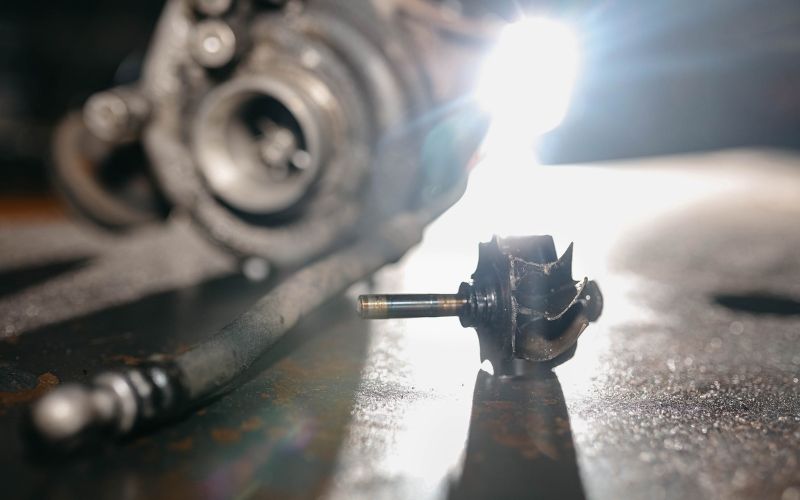
8. Loss of Boost Pressure
Boost pressure is essential for optimal performance in a turbocharged engine. A loss of boost pressure means that your engine isn’t receiving enough air for combustion, leading to decreased power output.
- Symptoms: You may notice a lack of acceleration or power when driving under load conditions (e.g., going uphill). Additionally, you might feel that your vehicle struggles during overtaking maneuvers.
To diagnose boost pressure issues, consider having a professional perform a boost leak test or inspect for any blockages in the intake system.
9. Warning from Diagnostic Tools
In today’s digital age, vehicles come equipped with advanced diagnostic systems that monitor various components’ performance in real-time. If you own an OBD-II scanner or have access to one at an auto parts store, you can use it to check for any error codes related to the turbocharger.
- Common Codes: Aside from P0299 and P0234 mentioned earlier, other codes may indicate specific issues with sensors related to boost pressure or airflow measurements (e.g., MAF sensor issues).
Regularly scanning for diagnostic codes can help keep you informed about your vehicle’s health and alert you to potential problems before they escalate.
10. Physical Damage to Turbo Components
Physical inspection of your turbocharger is crucial for identifying potential issues that may not be evident through other signs alone. Look for visible signs of wear and tear on various components:
- Cracks and Corrosion: Inspect the turbine housing and compressor housing for any cracks or corrosion that may indicate failure.
- Worn Bearings: If you’re comfortable doing so, check for excessive play in the shaft by gently wiggling it; excessive movement could indicate worn bearings within the turbo assembly.
Regular maintenance checks should include visual inspections of critical components like the turbocharger; catching physical damage early can save you significant repair costs later on.
Top 10 Signs Your Turbocharger Needs Replacement — Don’t Miss Them!
Recognizing the signs of a failing turbocharger is essential for maintaining optimal vehicle performance and preventing costly repairs down the line. From excessive exhaust smoke and poor acceleration to unusual noises and diagnostic warnings, being proactive about these symptoms can save you time and money in repairs while ensuring that your vehicle runs smoothly.
If you notice any of these warning signs in your vehicle, it’s advisable to consult a qualified mechanic who can conduct a thorough inspection and determine whether replacement is necessary. Remember: timely intervention is key when it comes to automotive maintenance!
Featured Products
View All
Need Help?
331-888-8726
941-299-1612
Monday – Friday: 9 am-6 pm
Weekend Closed

